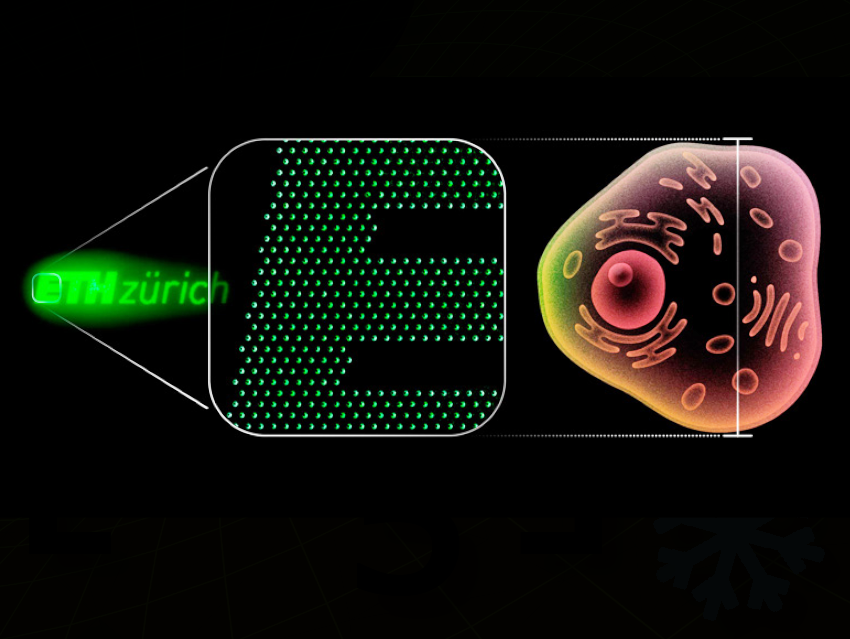Shuangshuang Zeng, ETH Zürich, Switzerland, and Huazhong University of Science and Technology, Wuhan, China, Chih-Jen Shih, ETH Zürich, and colleagues have developed a scalable method to make ultra-small organic LEDs (OLEDs) with pixel sizes below the wavelength of emitted light. That was previously considered technically impossible. Their method allows the scalable fabrication of nanoscale organic light-emitting diodes with pixel densities up to 100,000 pixels per inch, periodicity of 250 nm, and the smallest pixel size in the order of 100 nm.
To illustrate how small it is, the team displayed the ETH Zurich logo. It consists of 2,800 nano-OLEDs and is similar in size to a human cell, with each of its pixels measuring around 200 nm.
By using ultrathin, mechanically stable silicon nitride membranes as templates, the researchers created nano-OLED pixels using a method compatible with standard chip lithography. The team used a reusable nanostencil to directly pattern the organic semiconductors. The organic semiconductor is deposited or etched only where the stencil allows, creating precisely patterned OLED pixels without conventional photoresists or masks.
The nanopatterned OLEDs maintained high efficiency while allowing control over light direction and polarization, creating “electroluminescent metasurfaces” that convert electrical charges into precisely modulated light.
This approach enables ultra-high-resolution displays, on-chip optical communication, and advanced photonic devices, overcoming previous limits of organic semiconductor patterning. The researchers are currently working on optimizing their method.
Image: This ETH Zurich logo consists of 2,800 nano
light-emitting diodes and, at a height of 20 μm, matches
the size of a human cell. A single pixel measures around
0.2 μm (200 nm). Image: Amanda Paganini/ETH Zurich.
- Scalable nanopatterning of organic light-emitting diodes beyond the diffraction limit
Tommaso Marcato, Jiwoo Oh, Zhan-Hong Lin, Tian Tian, Abhijit Gogoi, Sunil B. Shivarudraiah, Sudhir Kumar, Ananth Govind Rajan, Shuangshuang Zeng, Chih-Jen Shih
Nature Photonics 2025
https://doi.org/10.1038/s41566-025-01785-z



